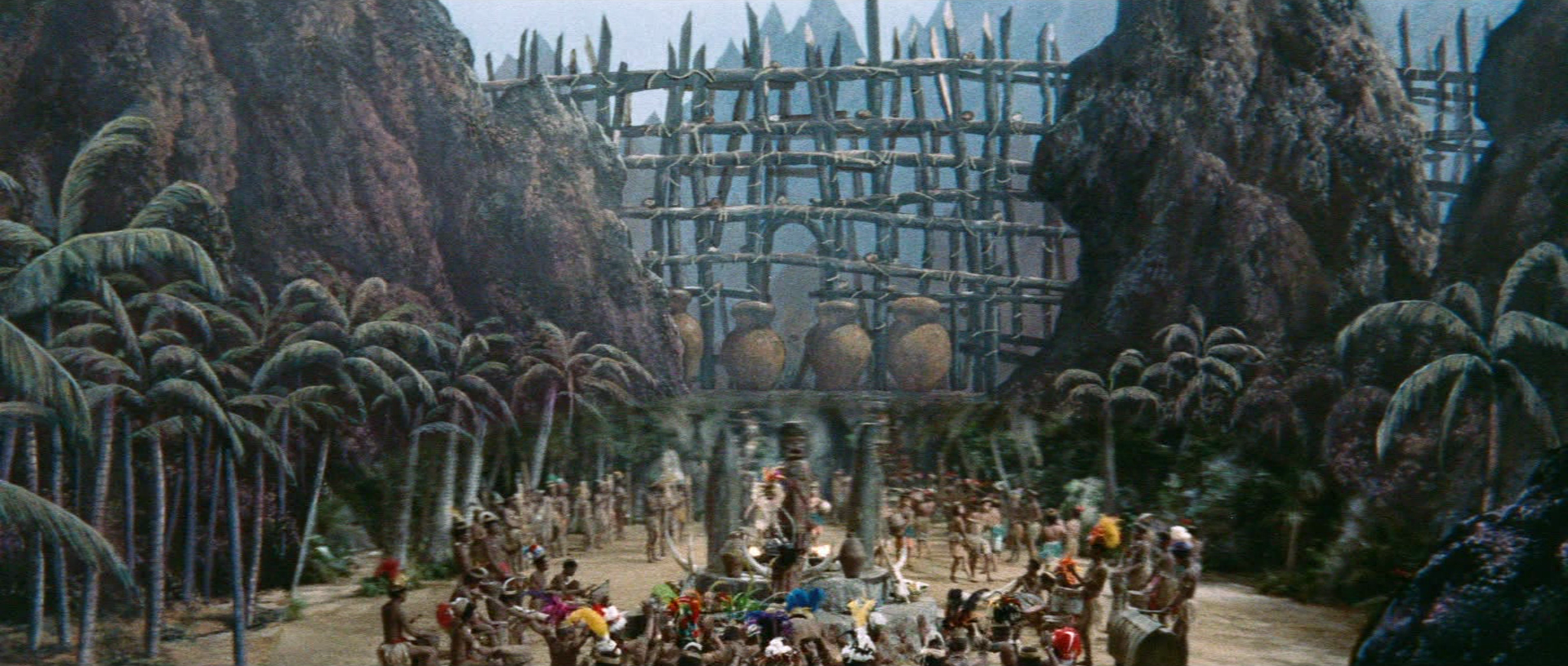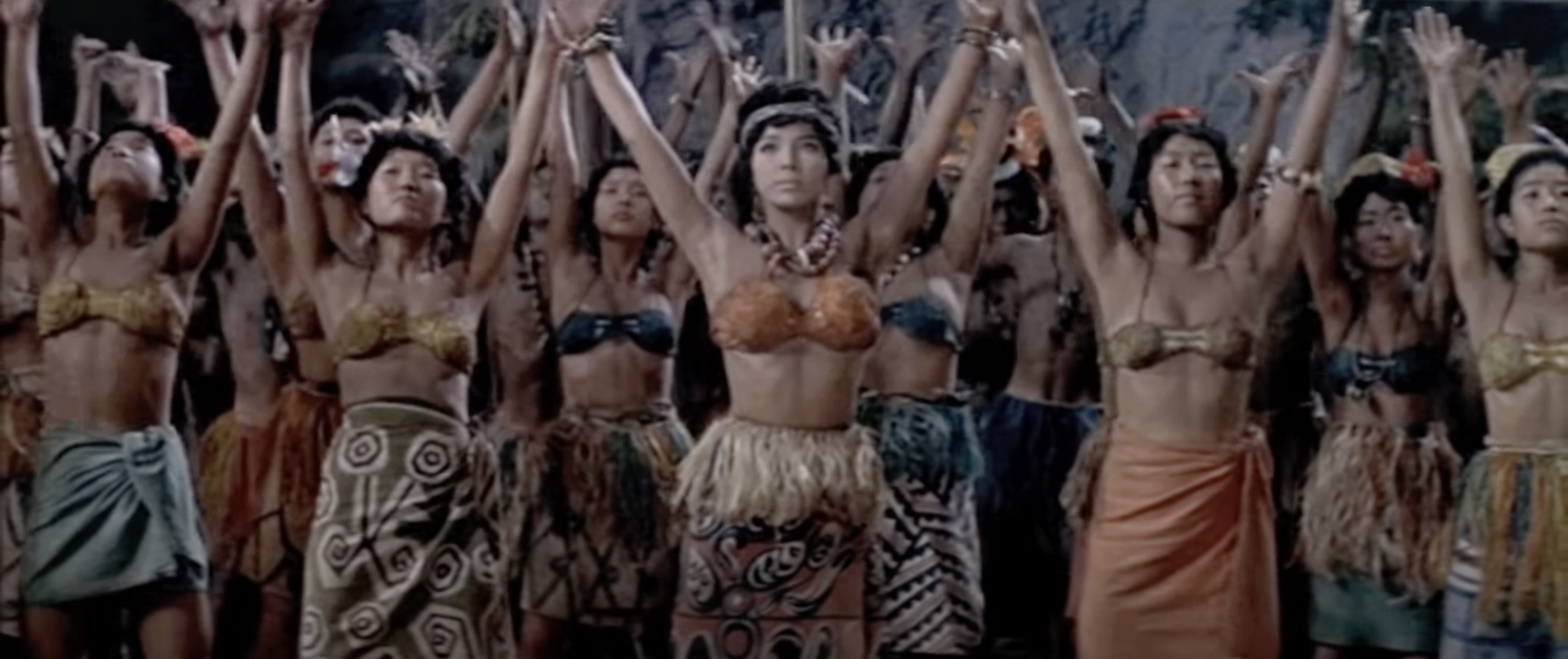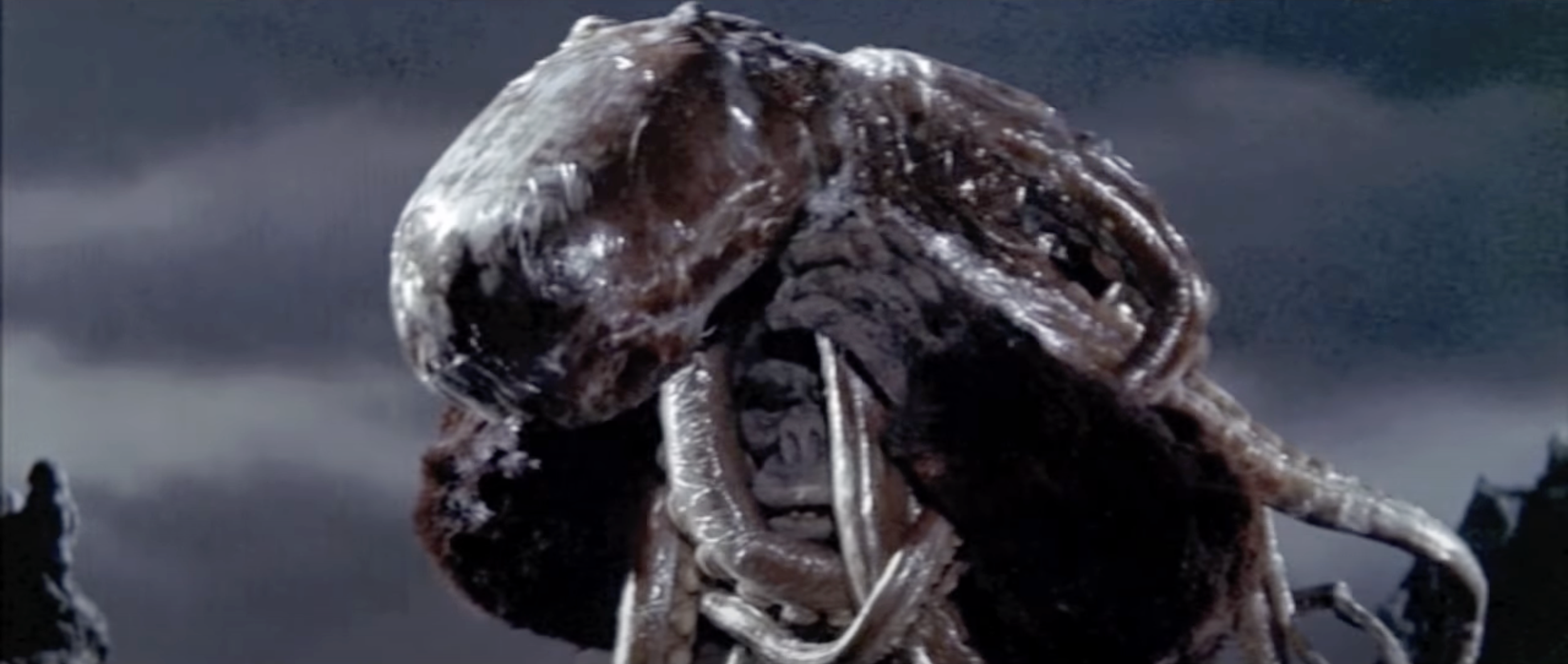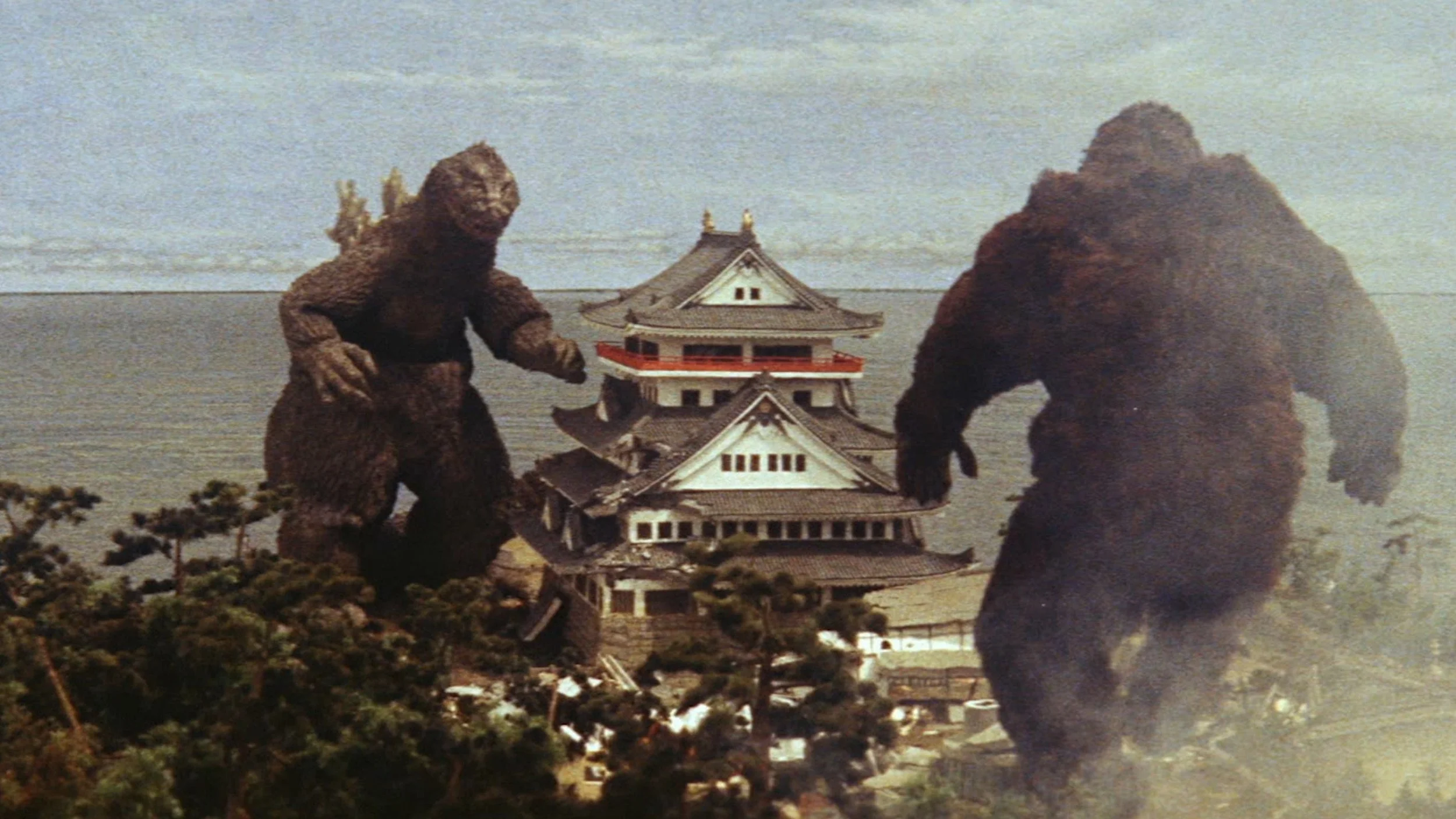Phase 4 ‘Taiheiyō (Pacific)’ (2023) by Yuki Kihara
Part of ‘サ–モアのうた (Sāmoa no uta) A song about Sāmoa’ (2019 – 2023) by Yuki Kihara
ARTIST STATEMENT
Yuki kihara at Spa Resort Hawaiians, 2015.
Photo courtesy of Yuki kihara.
In 2015, I conducted site visits to Fukushima prefecture, among others, including the Spa Resort Hawaiians (SRH) - one of Japan's biggest hot spring park located in Iwaki city. SRHʻs marketing campaign which catred towards the local people relied heavily on the aesthetic of Polynesian tourism. SRH was also the venue for the PALM8 Summit (Eighth Pacific Islands Leaders Meeting) held in May 2018 chaired by Sāmoa Prime Minister Tuilae’pa Sailele Malieolegaoi, and hosted by Japan Prime Minister Shinto Abe. The PALM Summit is often seen as an extension of Japanʻs history of colonial and imperial expansion across the Pacific.
The ongoing diplomatic relationship between Japan and the Pacific is ironically played out in the popular Japanese sci-fi film entitled ʻKing Kong VS Godzillaʻ (1962) directed by Ishiro Honda, which portrays the Pacific through a colonial lens. In the film, a Japanese corporation called the ‘Pacific pharmaceuticals’ kidnaps King Kong from Farou Island – a fictitious Island in the Pacific and transported to Japan, where King Kong escapes from captivity and battles recently released Godzilla, a prehistoric sea monster empowered by nuclear radiation from an American submarine. The film also features Japanese actors brown-faced as Pacific people worshipping King Kong as a god. During their fierce battle in Japan, King Kong and Godzilla destroy Atami Castle and both fall off a cliff together into the Pacific Ocean. After an underwater battle, only King Kong resurfaces, and swim towards his Island home. There is no sign of Godzilla, but the Japan Self-Defense Forces speculates that it may have survived.
Symbolically, Godzilla represents a powerful alliance between Japan and US which saw US building nuclear powerplants across Japan as a show of technological advancement against King Kong representing the Pacific as ʻthe otherʻ being less advanced. However, Phase 4 sub-theme entitled ʻTaiheiyō (Pacific)ʻ reframes the filmʻs fictional plot by making reference to the reality of nuclear waste - created as a result of Japan/US alliance - leaking into the Pacific Ocean from the damaged Fukushima Daiichi power plant in 2011; thus impacting the ecology, marine life and fiseries that Japan and the Pacific countries both rely on for food security. This paradoxical relationship alludes to the late Teresia Teaiwa’s definition of “militourism” as a “phenomenon by which a military or paramilitary force ensures the running of a tourist industry, and that same tourist industry masks the military force behind it."
Yuki Kihara
Below: Stills from ‘King Kong vs. Godzilla’ (1962) d. Ishiro Honda (Japan)
Supported by Creative New Zealand.






